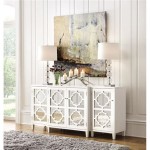Home Decor Paintings: Enhancing Interiors Through Art
Home decor paintings represent a significant element in interior design, serving as a visual focal point and contributing significantly to the overall ambiance of a living space. The selection and placement of artwork can transform a room, reflecting the personal style of the homeowner and creating a more inviting and aesthetically pleasing environment. This article explores the multifaceted role of home decor paintings, examining the various styles, considerations for selection, and the impact art has on interior design principles.
Artwork, in the form of paintings, provides a unique opportunity to inject personality and character into an otherwise static space. Unlike mass-produced decorative items, original or high-quality reproduction paintings offer a visual narrative, sparking conversation and creating a sense of depth and sophistication. The right painting can complement existing furniture, color schemes, and architectural features, tying the entire room together in a cohesive and harmonious manner.
Furthermore, the psychological impact of paintings within a home should not be underestimated. Art has the power to evoke emotions, create a sense of calm, and inspire creativity. Carefully chosen paintings can contribute to a positive and uplifting atmosphere, improving the overall well-being of the inhabitants.
Selecting the Right Style for Your Space
One of the primary considerations when incorporating paintings into home decor is selecting the appropriate style. The vast array of artistic styles available offers options for any aesthetic preference, from traditional to contemporary and everything in between. Understanding the nuances of different styles is crucial in making an informed decision that complements the existing decor and reflects the desired atmosphere.
Traditional art styles, such as realism, impressionism, and classical art, often feature landscapes, portraits, and still lifes. These styles can add a touch of elegance and sophistication to a room, particularly in more formal settings. Landscapes, for example, can bring a sense of the outdoors inside, creating a calming and serene environment. Portraits can add a sense of history and character, while still lifes can introduce a touch of domesticity and charm.
Modern and contemporary art styles, on the other hand, encompass a wider range of approaches, including abstract expressionism, minimalism, and pop art. These styles often feature bold colors, geometric shapes, and unconventional compositions. Modern art can add a sense of energy and dynamism to a space, making it feel more vibrant and contemporary. Abstract art, in particular, allows for personal interpretation and can serve as a conversation starter.
Beyond broad stylistic categories, there are also numerous sub-genres and regional variations to consider. For example, Asian art, African art, and Indigenous art each have their own unique aesthetic qualities and cultural significance. Incorporating art from different cultures can add a sense of global awareness and sophistication to a home.
Ultimately, the choice of style should be guided by personal preference and the overall design aesthetic of the room. It is important to consider the existing furniture, color scheme, and architectural features when selecting a painting. A painting that clashes with the surrounding decor can detract from the overall aesthetic appeal of the space. Conversely, a painting that complements the decor can enhance its beauty and create a more harmonious and inviting environment.
Considering Size, Scale, and Placement
Once the style of painting has been determined, the next crucial step is to consider the size, scale, and placement of the artwork within the room. These factors play a significant role in how the painting is perceived and its overall impact on the space. A painting that is too small or too large for the wall can look out of place and detract from the overall aesthetic appeal. Similarly, improper placement can hinder the painting's ability to effectively communicate with the viewer.
The size of the painting should be proportional to the size of the wall on which it will be displayed. As a general rule, the painting should occupy approximately two-thirds to three-quarters of the wall space. For larger walls, a larger painting or a collection of smaller paintings may be appropriate. For smaller walls, a single, smaller painting may be more suitable.
The scale of the painting should also be considered in relation to the surrounding furniture. A painting that is too small can get lost behind a large piece of furniture, while a painting that is too large can overwhelm the space. It is important to choose a painting that complements the furniture and creates a sense of balance and harmony.
The placement of the painting is also critical. The painting should be hung at eye level, allowing viewers to easily appreciate its details. The exact height will vary depending on the average height of the inhabitants, but generally, the center of the painting should be approximately 60 inches from the floor. It's crucial to consider the viewing distance. Smaller, more detailed paintings benefit from closer viewpoints, while larger works can be appreciated from a greater distance.
The lighting in the room should also be taken into account when placing the painting. Natural light can enhance the colors and textures of the painting, while artificial light can be used to highlight specific areas. Avoid placing paintings in direct sunlight, as this can cause them to fade over time. Furthermore, carefully consider the background on which the painting will be hung. A dark painting will stand out more against a light background, while a light painting will be more visible against a dark background.
The Impact of Color and Texture
Color and texture are fundamental elements in painting that significantly influence the overall aesthetic impact and emotional response to the artwork. The careful use of color can evoke specific feelings, create visual interest, and complement the existing color scheme of the room. Similarly, texture can add depth and dimension to the painting, making it more visually engaging and tactile.
Color psychology suggests that different colors can evoke different emotions. For example, blue is often associated with calmness and serenity, while red is associated with energy and passion. Green is associated with nature and harmony, while yellow is associated with happiness and optimism. When selecting a painting, it is important to consider the colors and how they will impact the overall mood of the room.
The color palette of the painting should also complement the existing color scheme of the room. A painting with complementary colors can create a sense of balance and harmony, while a painting with contrasting colors can create a sense of drama and excitement. It is important to consider the existing furniture, textiles, and wall colors when selecting a painting to ensure that it complements the overall aesthetic.
Texture can add another layer of visual interest to a painting. Texture can be created through various techniques, such as impasto (thickly applied paint), glazing (thin layers of translucent paint), and collage (incorporating different materials). A painting with a lot of texture can feel more tactile and engaging, while a painting with a smooth surface can feel more refined and elegant.
The texture of the painting should also complement the surrounding decor. A painting with a rough texture may be more suitable for a rustic or industrial style room, while a painting with a smooth texture may be more suitable for a modern or minimalist style room. It is important to consider the existing furniture, textiles, and architectural features when selecting a painting to ensure that its texture complements the overall aesthetic.
In summary, the strategic integration of home decor paintings requires a thoughtful approach, encompassing style selection, size and placement considerations, and an understanding of the impact of color and texture. By carefully considering these factors, individuals can transform their living spaces into visually appealing and emotionally resonant environments.

Modern Brown Color Simple Wall Paintings Living Room Mural Abstract Wa Art Street

Buy Best Wall Art In Upto 50 Off Urban Ladder

Wall Art Home Decor Wallcorners Your Life Canvas Painting Living Room Kitchen

Abstract Art Prints Home Decorabstract Paintings On Canvas

Buy Living Room Wall Paintings At Upto 50 Off In Pisarto

Wall Decor Painting Ideas For Your Home Designcafe

1 Pieces Famous Abstract By Picasso Modern Home Decor Wall Pictures Hd Print On Canvas Cuadros Minimalistas De

Buy Modern Wall Art Paintings For Home Decor At Best Building And Interiors

Buy Rangoli New Modern Art Trendy Wall Paintings For Home Decoration Living Room Bedroom Size Medium At Best S In Jiomart

Abstract Glass Colourful Multi Frame Wall Painting For Living Room Modern Oil Art Home Decor
Related Posts







